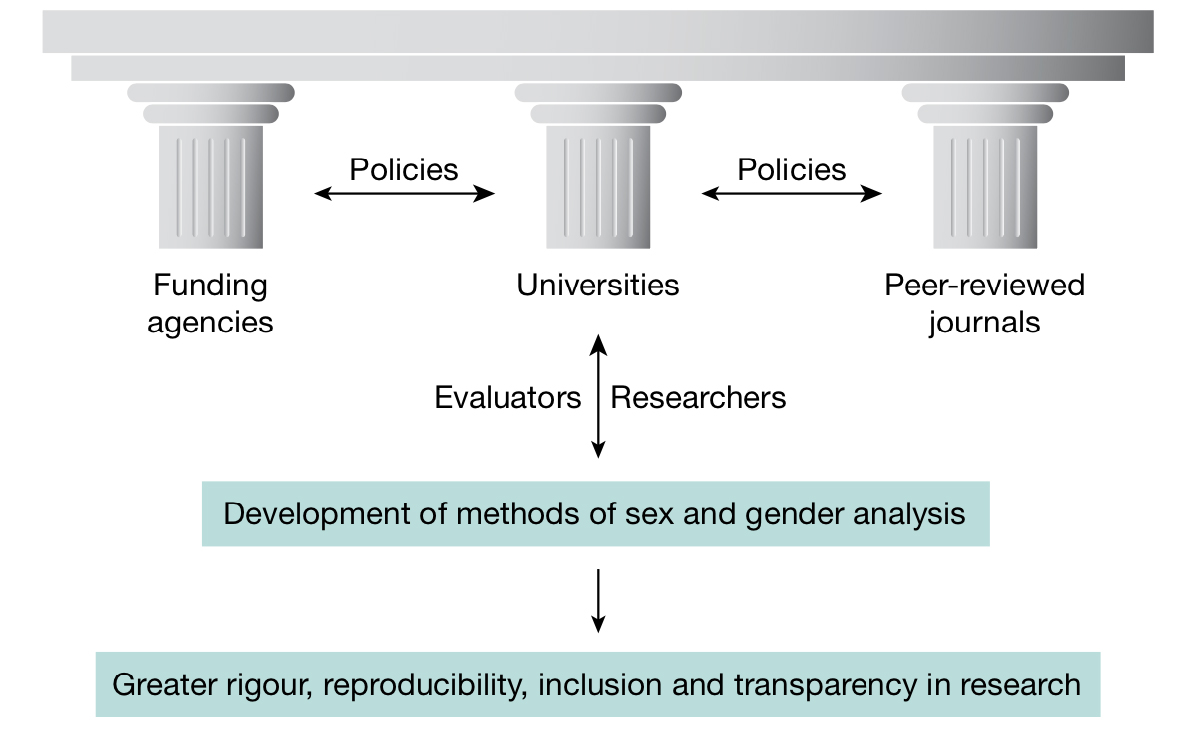Policy Recommendations
Designing sex and gender analysis into research and innovation is one crucial component contributing to world-class science and technology. As the Case Studies demonstrate, integrating sex and gender analysis into research sparks creativity by offering new perspectives, posing new questions, and opening new areas to research.
Three pillars of the science, health & medicine, engineering, and environment infrastructure. To reap the benefits of sex and gender analysis, the pillars of science infrastructure must coordinate policies (Tannenbaum et al., 2019).

Important Next Steps:
1. Granting Agencies can ask applicants to explain how sex and gender analysis is relevant in their proposed research. The European Commission has implemented the Gender Equality Plan (GEP) eligibility criterion (2022). This is defined as a set of mandatory requirements for all public bodies, higher education institutions and research organizations from Member States and Associated Countries wishing to participate in Horizon Europe—as described in the General Annexes to Horizon Europe 2021-2022 work programme. This requirement shores up the connection especially between universities and EC funding. Click to find a list of funding agency policies.
2. Editors of Peer-Reviewed Journals and Peer-Reviewed AI Conferences can require sophisticated sex and gender analysis when selecting papers for publication or conference presentation.
3. Universities need to step up and incorporate sex and gender analysis as conceptual tools into the core curriculum of natural science, health & medicine, engineering, and environmental science. Universities must do more to prepare the scientific workforce for the future.
4. Industry can incorporate the smartest aspects of gender to open new markets and enable innovation in products, processes, services, or infrastructures. Products that meet the needs of complex and diverse user groups enhance global competitiveness and sustainability.
Works Cited
Tannenbaum, C., Ellis, R. P., Eyssel, F., Zou, J., & Schiebinger, L. (2019). Sex and gender analysis improves science and engineering. Nature, 575 (7781), 137-146.





